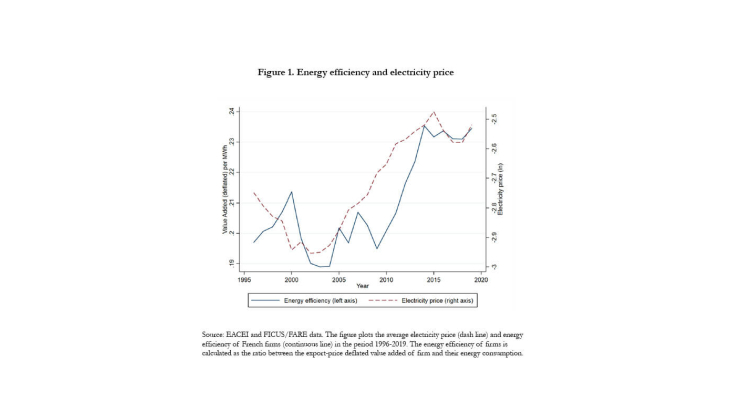Concerns about the impact of the energy crisis on the European manufacturing sector have been central to the economic policy debate. This was particularly the case in the spring of 2022, when a potential embargo on Russian oil and gas was contemplated and the energy shock materialized in an unprecedented way. In France, however, this massive price shock did not provoke the sudden drop in industrial production that had been feared. At the same time, energy-intensive manufacturing firms significantly reduced their demand for electricity. This suggests that firms have found ways of adjusting not primarily through production scaling back, but through other channels, which can be described as substitutions.
Much can be learned from past episodes of energy price hikes and this paper mobilises plant- and firm-level data over a long period (1996–2019) for French manufacturing firms. Such granular approach sheds a precise light on the many channels of adjustments that manufacturing firms make in the face of energy price hikes. Combining the annual survey on energy consumption conducted at the plant level in France with balance sheets and custom data, this paper estimates the effect of gas and electricity price shocks on firm-level energy demand, efficiency, prices, exports, employment, production, and profits of French firms. This analysis confirms that the impact of energy shocks on energy efficiency is at work at the firm level. Figure 1 illustrates this important mechanism. On the period 1996-2019, energy prices paid by firms and energy efficiency look strongly correlated, i.e. the energy intensity of output declines in periods of raising energy prices.
Faced with an idiosyncratic energy price increase, firms reduce their energy demand, improve their energy efficiency, increase intermediate inputs imports and optimize energy use across plants. Firms are also able to pass-through the cost shock fully into their export prices. Their production, exports and employment fall. A consequence of these multiple adjustment mechanisms is that the fall in profits is either non-significant, small or specific to only the most energy intensive firms. The price elasticity of energy demand has weakened over time suggesting that the adaptation to price shocks was stronger-and-easier-at the beginning of the period and that only firms able to adapt to energy cost shocks have survived. Importantly, this elasticity is also lower for large price hikes: when faced with large increases in energy prices, firms are less able to reduce their consumption in proportion to price hikes. These results shed light on the mechanisms of resilience of the European manufacturing sector in the context of the present energy crisis.
